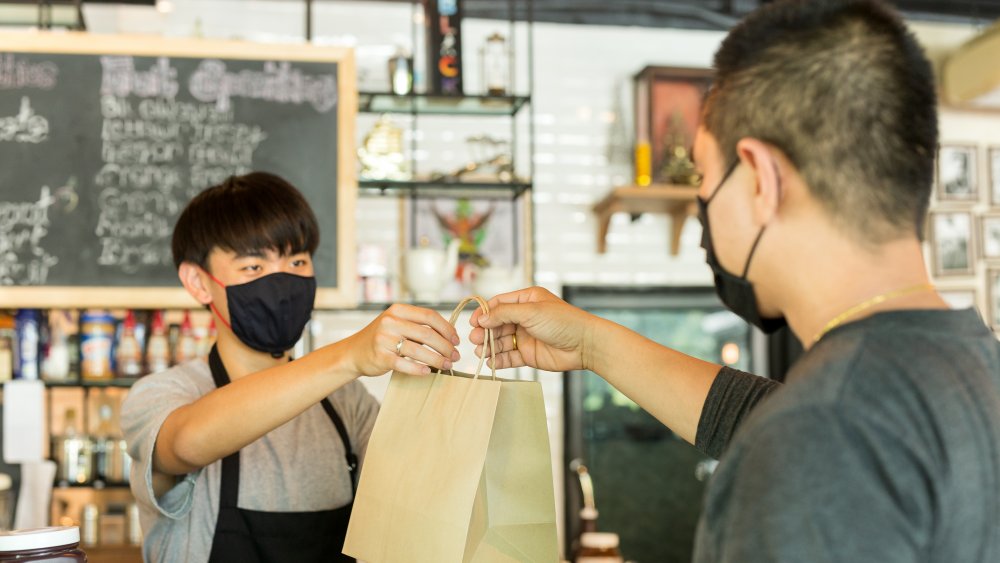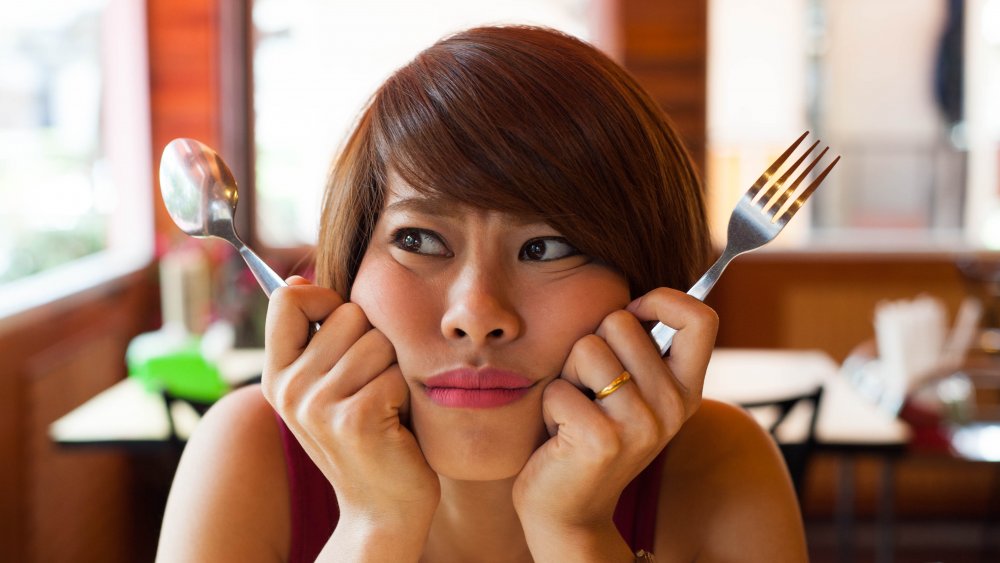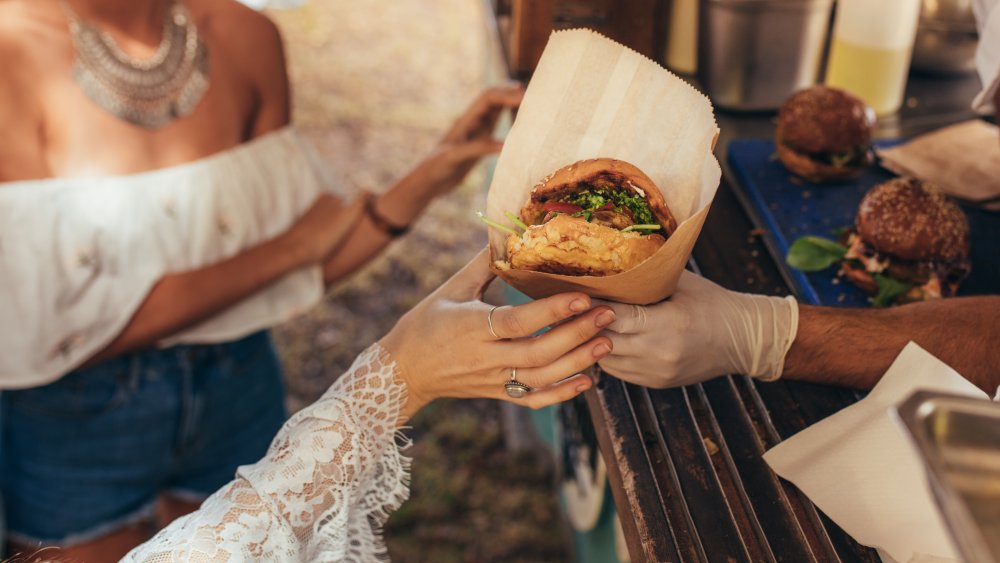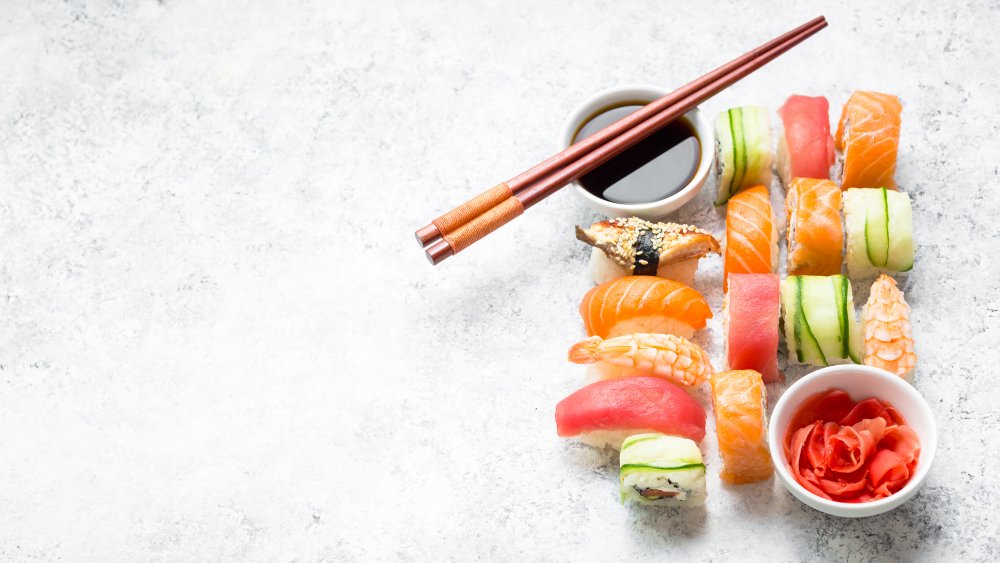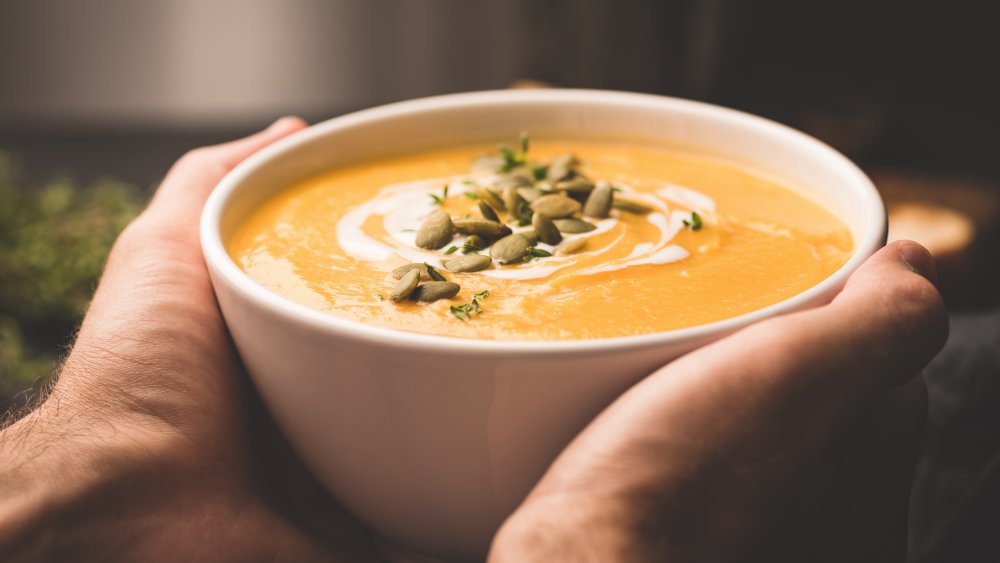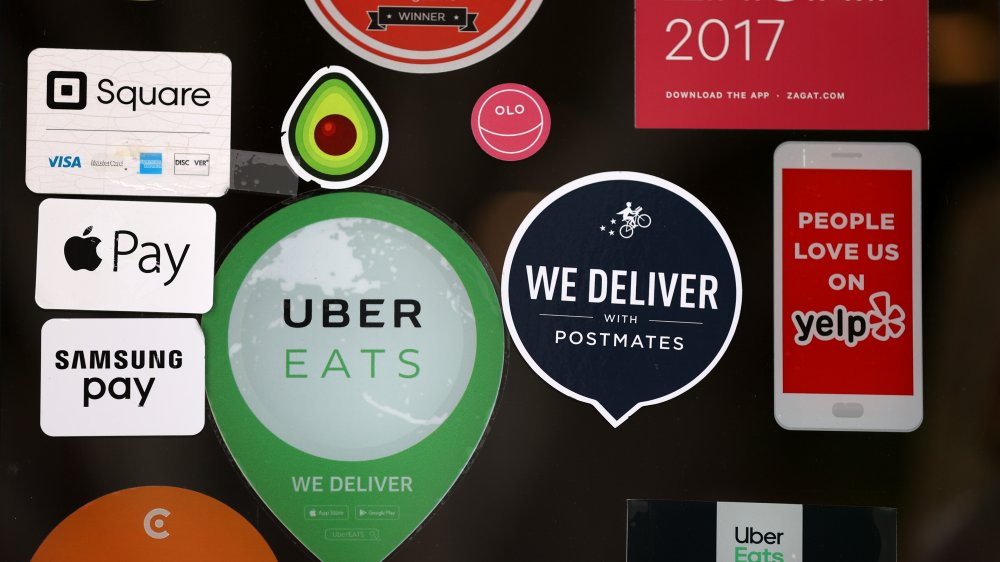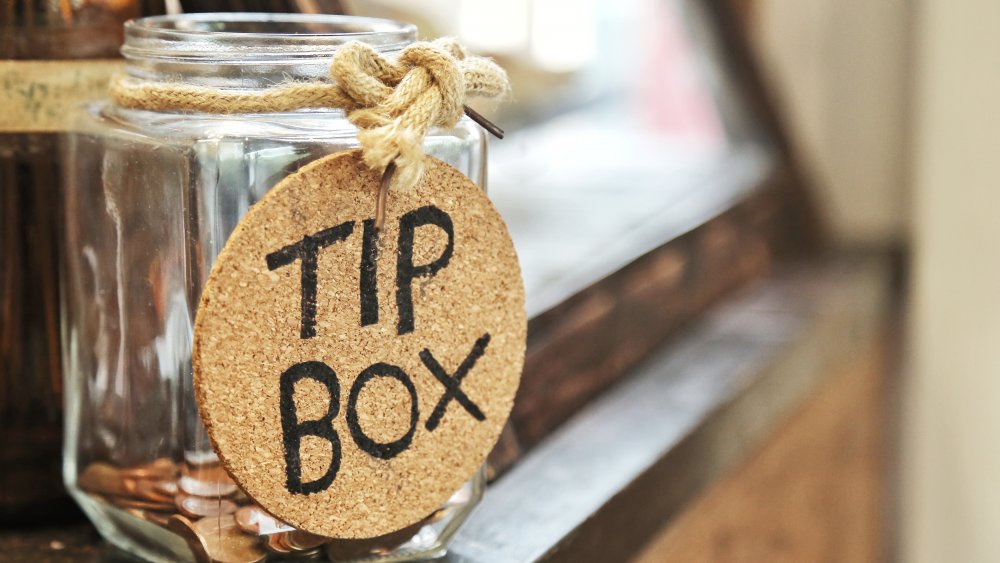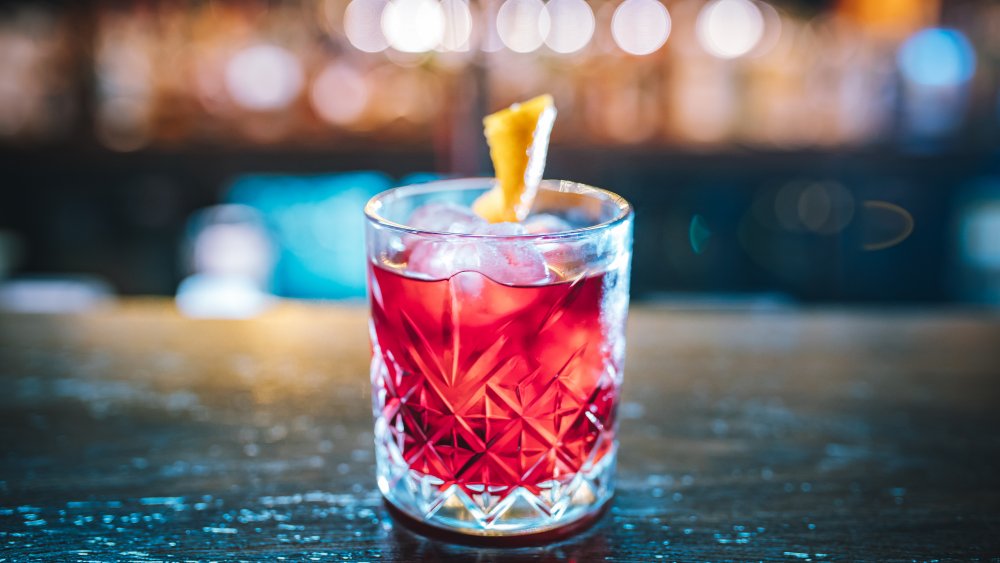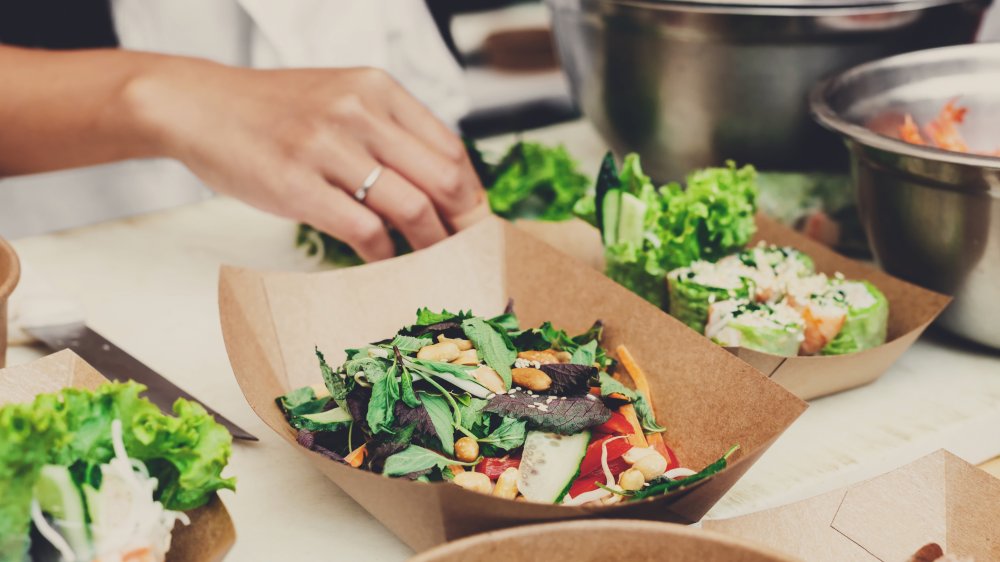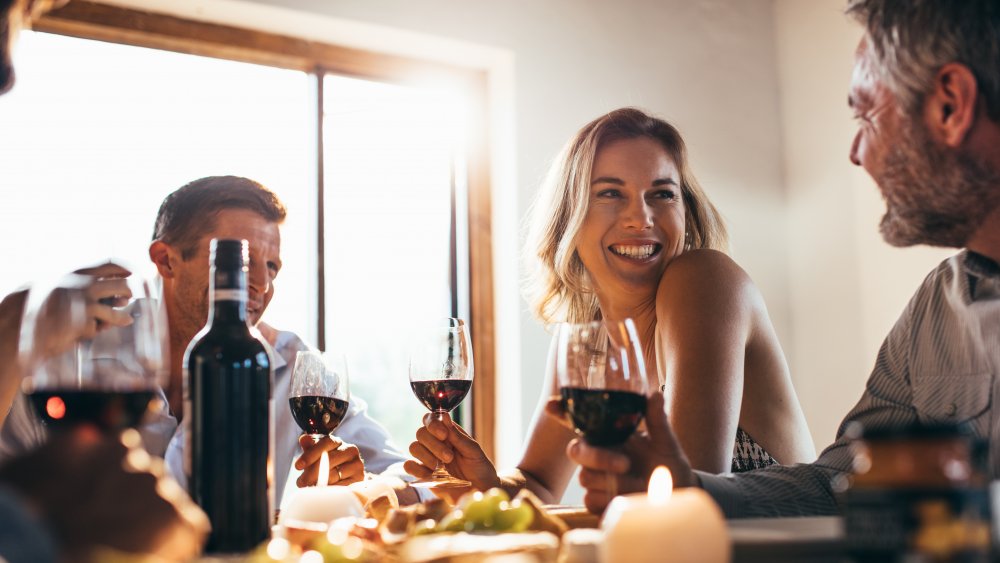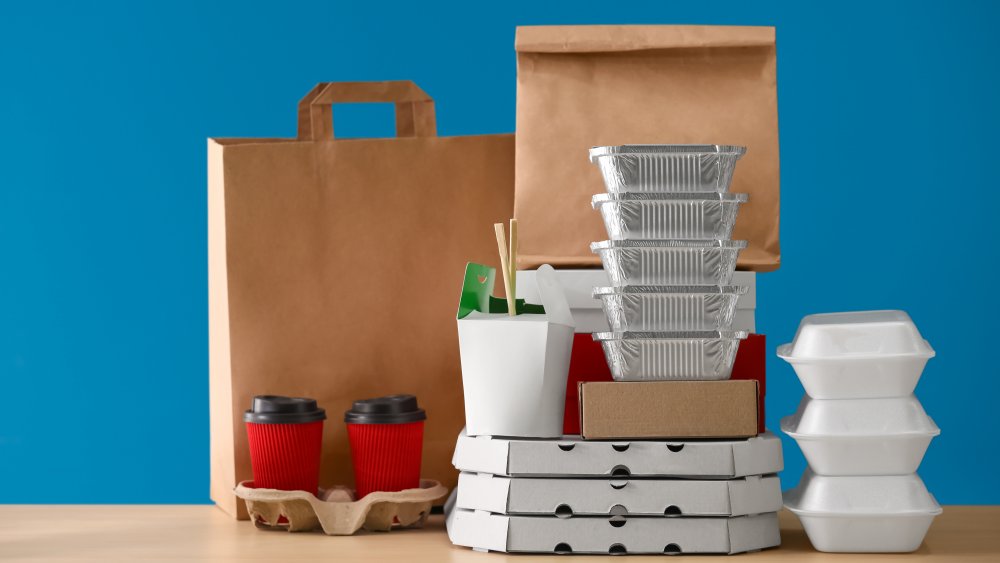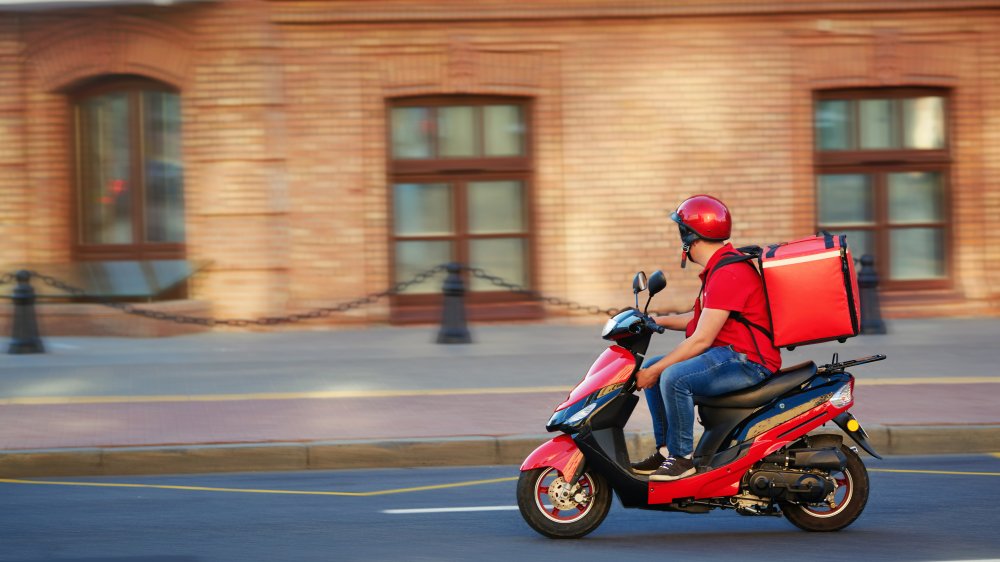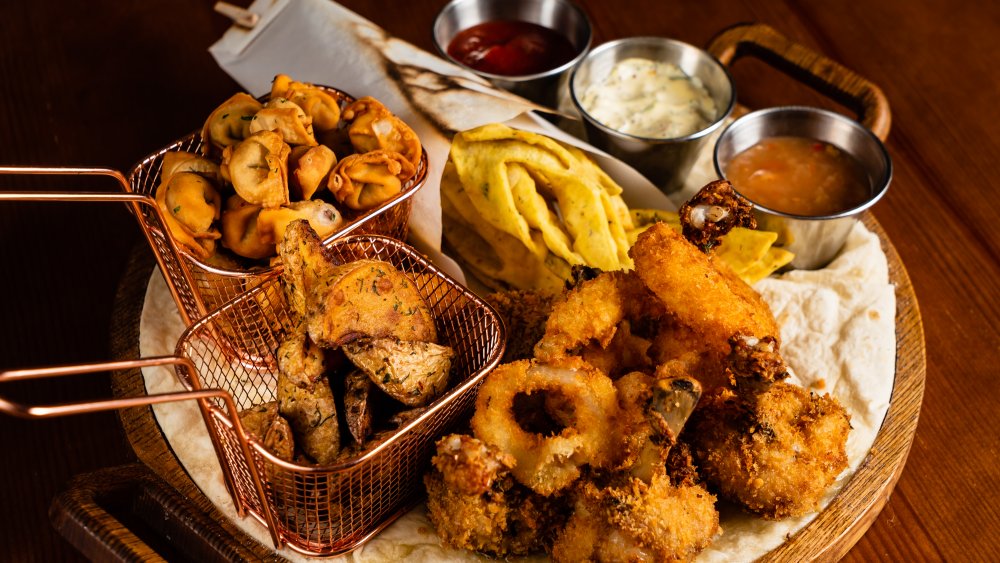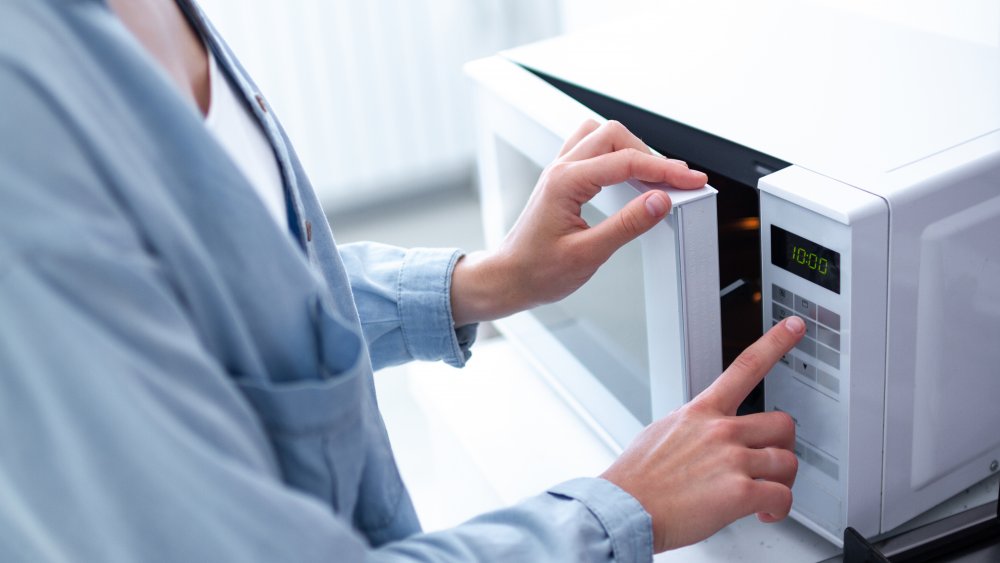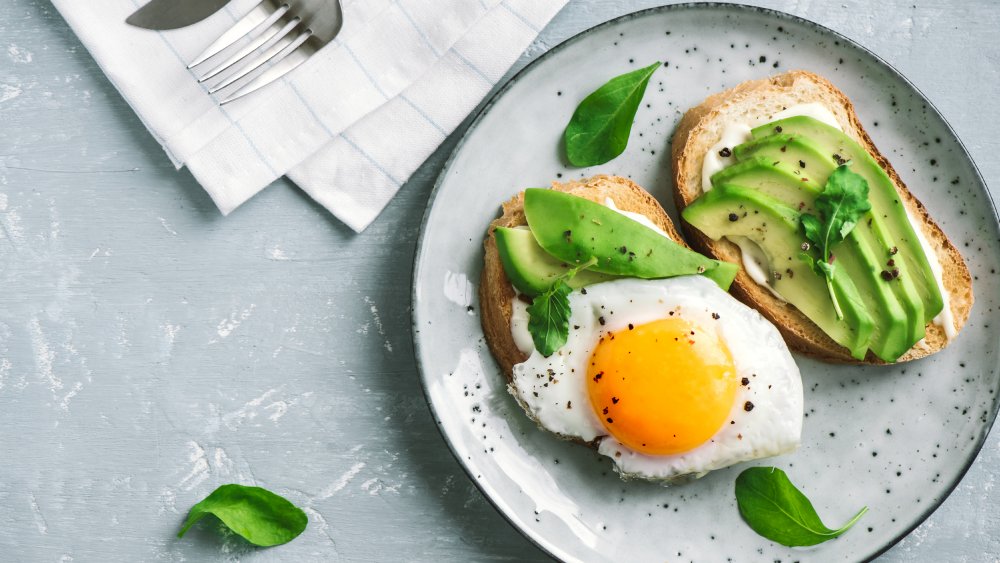Huge Mistakes Everyone Makes When Ordering Delivery
Delivery is one of the great wonders of the food world — the perfect marriage of restaurant quality and home comfort. But just like any menu savant knows, ordering your food to be delivered adds a whole new layer of complexity to the selection process, not to mention all the new variables to consider when transporting food across distances great or small. What you're craving might not be delivery-friendly, and the fastest delivery option might not be the most ethical or economical. Though third-party app usage is on the rise, these apps often hurt restaurants more than they help even the most insatiable of appetites.
With most restaurants' dining options still limited due to COVID-19, delivery is often the only possible — as well as the safest — way to eat out. Everyone needs a break from their own kitchen every once in a while, and you can support local restaurants in the process. But there are some key pitfalls and mistakes you should avoid when you plan on ordering delivery. Put a little extra thought into your delivery meal next time, and you'll almost forget you still have to clean up after yourself.
Ordering delivery when you're hungry
You can't expect a meal to arrive at your door as quickly as it would your table in a restaurant — after all, not only does the food need to be cooked and placed in takeout boxes, it also must be picked up by the deliverer and transported, along with thousands of other orders, across the city. Depending on traffic, the last step alone could take at least an hour. Domino's may have a 30-minute countdown, but most restaurants do not guarantee an arrival time, so you shouldn't expect your meal to magically show up at your door right after you order it.
Some restaurants even suggest that customers place their orders earlier in the day. The coronavirus pandemic has made it necessary for restaurants to adjust their regular operations. Without the limited capacity a real restaurant provides, many popular fine dining hotspots sell out of items quickly, and so they recommend placing your order well before dinner service begins.
Skipping these takeout-friendly dishes while ordering delivery
Not everything travels as well as pizza does, and sometimes the idea of a soggy, lukewarm meal is enough to make even the most reluctant home cooks break out the spatula. Luckily, there are many other takeout-friendly options available.
According to Insider, grilled food is perfect for delivery — it's made to sit outside past its prime at outdoor grill-outs, so you can be sure it will be flavorful no matter how long it takes to get to your house.
Similarly, barbecue, with its intense flavor and the hardiness, can handle a drive across town. Even if it's not piping hot by the time you dig in, the taste of barbeque can't be beat. "It doesn't have to be crispy," said Matthew Green of Blue Orbit Restaurant Consulting. "It's still good when it's cooled off a bit, and doesn't depend on some fancy presentation."
Choosing items that spoil quickly when ordering delivery
When ordering delivery, it's important to keep in mind that some foods aren't made to last forever — some hardly stay good for any time at all before you'll want to throw them out. If you're the kind of person who likes to keep a few takeout boxes in the fridge for late-night snacks or midday meals, keep in mind that certain dishes only last a day.
If you're ordering sushi, you should be sure to do so with an empty stomach so you can finish every bite, as sushi quickly becomes slimy and unappetizing. As a USDA Food Safety specialist suggests: "order it and eat it."
Salads also, when dressed, don't last more than a day, so it's best to finish these types of dishes as soon as they arrives. The greens will wilt within a matter of hours in the fridge. By putting the dressing on the side, however, a salad can survive fresh and crunchy up to four days in a takeout box.
Ordering hot soup for delivery on a cold day ... or any day
Though soup might seem like a good option for delivery, especially as the weather gets cold, it's best to leave this menu item for in-person dining or make it yourself. Because most restaurants don't use BPA-free containers, hot liquids can absorb the chemicals from these plastic bowls.
Jackie Arnett Elnahar, a registered dietitian, told Eat This, Not That that the "high temperature and consistency of the soup [might encourage] leaching of chemicals from the food containers."
Many people think soup is the perfect takeout option because it starts out so hot that by the time it reaches your door, it's cooled to the perfect temperature. But it's probably safest to skip the soup for delivery. On the bright side, heating up a can of soup is not much more complicated than boiling water, so even the most inexperienced of home cooks can handle this BPA-free kind of home-cooked meal.
Letting third-party apps profit off local restaurants when you order delivery
Many local restaurants do not offer private delivery services, so it's tempting to use third-party apps like GrubHub or Postmates to have your meal dropped off at your front door. But if your goal is to support local businesses, it's best to think twice before tapping "Place Order." Due to exorbitant commissions (these costs often reach up to 30 percent of the order's price), many restaurants struggle to make a profit when sending their meals out with independently contracted drivers.
"We know for a fact that as delivery increases, our profitability decreases," Michelle Gauthier, owner of Mulberry & Vine in New York City, told The New Yorker.
If you want to help your favorite local restaurants without the risk of spending most of your money on predatory businesses that take advantage of gig workers, consider picking up your meal yourself or opting for a restaurant that offers a delivery service — and don't forget to tip your driver!
Skipping the tip when you order delivery
Everyone knows tipping in restaurants is a requirement, but often people think they can skimp when it comes to tipping delivery drivers — especially the independent gig workers who work for apps like Uber Eats and Postmates. "There's definitely no tipping etiquette [in the gig economy] like there is with restaurants or even coffee shops," Harry Campbell, a gig worker and blogger told Fast Company.
According to Huffpost, normal delivery circumstances require just about the same tip for delivery drivers as you would give to servers inside a restaurant: 10 to 20 percent (though you're expected to tip at least 15 percent at a restaurant). Eater, on the other hand, recommends tipping a minimum $5 (at an "absolute minimum") no matter the total cost of the order.
It's important to remember to tip on top of the mandated delivery fee — that money usually does not go to your delivery driver. "Don't confuse a tip with a service charge," warns Diane Gottsman. Though the price of the meal, tax, service charge, and tip may seem like a lot to spend on dinner, tipping is not an optional fee, and you should factor it in before ordering a meal.
Expecting a cocktail to be delivered along with your order
Many people enjoy a glass of wine or a classic cocktail with dinner. Many times, an entire meal is planned around its complementary beverage. While many states allow customers to buy alcohol in sealed containers and have it delivered, as you would your groceries, open container laws prevent delivery drivers from picking up your single-serving cocktail along with your meal at your favorite restaurant.
During the coronavirus pandemic, however, many states have adjusted their delivery rules to better accommodate struggling restaurants and bars. For example, if you live in California, you can have beer, wine, or pre-mixed cocktails delivered to you from any restaurant, so long as the drinks have a lid. Idaho, on the other hand, allows unopened beer and wine to be delivered, but you must pick up your pre-mixed cocktails from bars or restaurants yourself. Don't forget to double-check liquor laws before planning your delivery feast.
Ordering delivery from chains over local restaurants
Though it may be tempting to order from Papa John's (again), supporting local restaurants is more important than ever. Giant food chains that offer delivery services like Pizza Hut and Jimmy John's make tons of money on their food and delivery options, whereas many local restaurants struggle to break even in the best of times. According to CBS, most restaurants spend 70 to 75 percent of their total revenue on food, rent, and labor (and that's despite the ridiculously low minimum wage requirement for tipped workers). This means that in order to begin making a profit, restaurants need 80 to 85 percent of its available seats filled at all times.
So rather than ordering from a chain restaurant whose net profits, at $400 million, are doing just fine, try checking in with your favorite locally owned joint to see what kinds of delivery options they offer, or stop by to say hello and pick up your takeout meal.
Expecting the full restaurant experience when ordering delivery
When you order delivery, you know the at-home dining experience will lack a certain amount of ambiance that in-person dining provides. The food isn't always piping hot, no kind strangers ask how you're doing, and the tableware doesn't appear and disappear as if by magic. It's important to keep this in mind when you order so you're not expecting your delivery driver to perform an impossible task when they hand you your food. But if you're willing to put some effort into it, you can still have a special experience at home, takeout boxes and all.
Baltimore Magazine suggests breaking out your best dishware and setting the table with a centerpiece, folded napkins, and even candles to change the atmosphere of your kitchen. If you're dining with others, try coming up with unique conversation starters to transform your routine chatting into something new and interesting.
Ordering a small meal for delivery
If you're just looking for a snack or ordering a meal for one, your small purchase could actually harm restaurants more than you might think. And if you use a third-party delivery service, as many of us do, these miniature meals can cost restaurants more to get to your door than you pay to eat them. As at-home diners use these apps with increasing frequency, many restaurant owners have decided to sell only family-style meals for delivery, thus encouraging people to order more items to share and making the delivery price worth it for the restaurant.
While it's understandable that individuals who live alone or don't routinely eat with others would order small quantities of food for delivery, you might consider buying a few dishes to help out your local restaurants. This way, restaurants can afford the exorbitant delivery fees many third-party apps charge, and you will have a few extra meals to enjoy the next time you're hungry.
Expecting everything to go smoothly when ordering delivery
Just like in a real restaurant, mistakes happen between the kitchen and your house. It may seem easy to get your food from point A to point B, but not only do restaurants have to cook your food, they also are responsible for coordinating the timing of all their deliveries. Drivers also don't typically work for the restaurants they deliver from, and they have many other orders to transport in addition to the one you might be waiting for.
Between the chefs in the restaurant kitchen, the delivery driver, and the customer who begins and ends the process, mistakes are inevitable. Sometimes delivery orders can pile up in the kitchen even if the dining area is nearly empty, creating long wait times for both in-person diners and takeout buyers. Restaurant etiquette remains relevant even if you never leave your house, so remember to be patient with service workers of all kinds.
Ordering fried food for delivery
Fried food might be just the meal you're dreaming of having delivered to your door, but it will likely become less idyllic in the time it takes to reach you. "Fried items will be soggy on arrival," Ariane Resnick, a chef, told Insider. "Also, once refrigerated, they will crisp up less when reheated."
It's not just french fries you want to avoid — anything that gets fried in oil, like mozzarella sticks, fried calamari, or fried green tomatoes, are subject to the same soggy fate if stuffed into a bag and driven around town for a while.
"Fried food is rendered pretty much inedible after a few hours so if you don't finish it, you'll likely end up putting it in the trash," said another chef. To avoid wasting food, try opting for something else when you want it delivered, and save the fried stuff for the drive-thru.
Reheating delivery leftovers in a to-go box in the microwave
Reheating leftover delivery takeout food is an art form. It takes practice, perseverance, and a wide range of knowledge to understand the best way to warm up different kinds of meals. Sometimes a microwave is the perfect way to quickly reheat an item. Chef Brian Bennett suggests draping a damp paper towel over small pieces of meat or veggies before nuking them. To avoid ending up with leftovers whose outer layer burns your mouth despite being cold in the middle, Bennett encourages taking your food out of the microwave frequently to stir, mix, or flip.
When a microwave won't do — when you're reheating soups or sauces, for example — try a saucepan. By adding a little liquid to the pot, you can remake your dish to become almost good as new.
Though the microwave works fine for larger cuts of meat, Bennett recommends heating those up in the oven instead. Ribs he prefers to reheat in the oven under low heat in a pan with a bit of water in it to steam them. For steaks, he utilizes both the stove and the oven to ensure it's reheated and re-crisped.
Ordering breakfast for delivery
When it comes to delivery, there are some dishes that should be reserved for in-person dining only. Eggs are, without a doubt, one of those items. Uncooked egg yolks pose a number of health hazards (lookin' at you, over-easies). In Anthony Bourdain's infamous Kitchen Confidential, he wrote: "Bacteria love hollandaise. And nobody I know has ever made hollandaise to order." Add to that the extra time in the car for a delivery order, and you won't even want to think about those eggs, much less eat them.
But even if the eggs survived the delivery journey without spawning bacteria, cold or lukewarm eggs are some of the worst things you can eat. "We forget how badly eggs smell when they're not fresh," said the co-founder of Habit Nest. "Plus, cold eggs don't taste nearly as good as you'd hope." So the next time you find yourself craving eggs on a Sunday morning, we highly recommend melting a pat of butter in your own pan and saving delivery for dinner.
